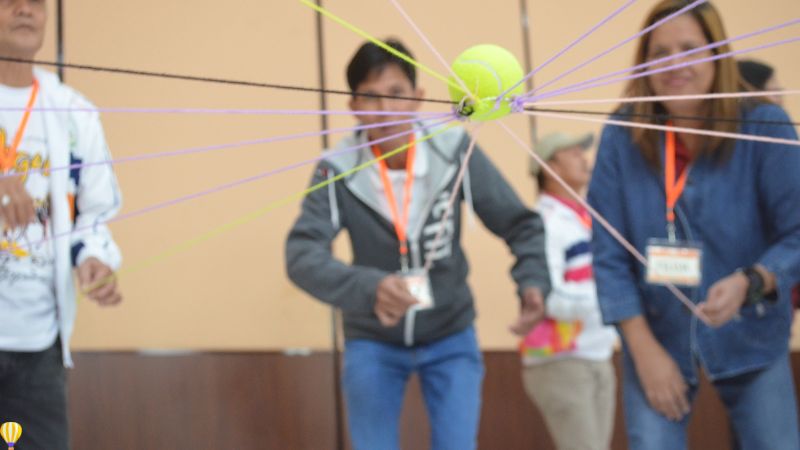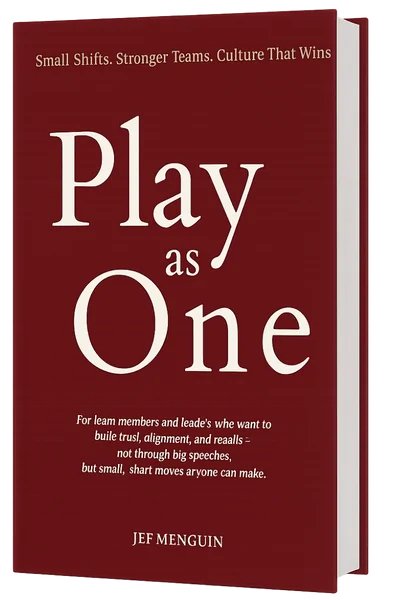Have you ever assigned a mentor to a promising employee—only to see that person quit a few months later?
You gave them a mentor. Sessions happened. Advice was given. But nothing changed. The employee left, or worse, stayed but stopped caring.
Many Filipino managers face this. Companies invest in mentorship, but people still feel lost, disconnected, and uninspired.
So the real question is this: why do mentorship programs fail—and what can we do differently?
The Problem With Mentorship in Filipino Companies
Most mentorship programs don’t fail because mentors don’t care. They fail because they miss what people truly need.
1. Surface Mentoring
Many mentoring sessions stay on the surface. A mentor shares stories, gives advice, and says, “When I was your age, I did this.” The mentee nods, smiles, and goes back to old habits. Nothing shifts.
2. Missing Malasakit
Mentorship without malasakit is empty. Malasakit means genuine care—showing, “Your success matters to me.” Without this, mentees feel like projects, not people. And when they feel like projects, they disengage.
3. One Mentor Can’t Do It All
Even the best mentor has limits. One person cannot teach every skill or model every behavior. A new employee may learn technical skills from one mentor, but not how to build confidence, collaborate, or take initiative. Depending on one mentor creates gaps that no advice can fill.
4. No Shared Struggles
Advice alone rarely changes people. We don’t shift because of lectures. We shift because of shared struggles and real wins. Teamwork. Problem-solving. Overcoming setbacks. Most mentorship programs skip this part. They tell—but they don’t test.
Ana, a young supervisor, met her mentor every week. She listened to stories about leadership, time management, and office politics. She smiled and took notes. But one day she admitted, “I liked the talks, but I never knew what to do differently on Monday morning.”
Ana didn’t need more stories. She needed real challenges, where she could practice, fail safely, and learn with others. Her mentorship wasn’t bad. It just wasn’t enough.
👉 And this is where team building can help. Avoid the shallow kind with games. Offer real experiences that bring malasakit back and make mentorship work.
Why Malasakit Is the Missing Ingredient
Malasakit is one of the most beautiful Filipino words we bring to work. It means more than concern. It means you care so deeply that you treat another person’s burden as your own. It’s the feeling that says, “Hindi ka nag-iisa. Kasama mo ako.”
When employees show malasakit, they don’t just finish tasks. They protect results. They look out for teammates. They go the extra mile not because someone forced them, but because they feel responsible.
But here’s the hard truth: many mentorship programs don’t build malasakit. They produce polite conversations, but not genuine care.
I once worked with a company where a senior manager said something unforgettable:
“Kapag walang malasakit ang tao, nagiging malas at sakit siya sa organisasyon.”
Those words hit hard. Without malasakit, a person becomes a burden. Malas — bringing bad luck. Sakit — becoming a pain to the team.
And I saw it happen.
A new hire was assigned a mentor. On paper, the process looked fine. They met every week. The mentor gave advice. The mentee listened. But when deadlines came, the mentee disappeared. When problems arose, the mentor shrugged. Neither felt responsible for the other.
The result? Missed targets. Blame games. Frustration that spread like fire. Instead of building strength, mentorship created weakness.
Now contrast that with another team. They didn’t just run mentoring sessions. They built experiences where mentors and mentees worked together. They solved challenges side by side. They laughed when things went wrong. They owned wins as one team.
The difference? Malasakit showed up. Mentors didn’t just advise. They carried the load with their mentees. Mentees didn’t just receive. They stepped up for their mentors. Everyone felt, “Kung babagsak ka, babagsak din ako. Kung aangat ka, aangat din ako.”
That is the power of malasakit. And that is what makes mentorship real.
👉 Without malasakit, mentorship is shallow. With malasakit, it becomes transformational. And the best way to awaken malasakit is through shared team building experiences.
The Team Building Advantage
Advice alone doesn’t grow malasakit. Experience does. And this is where team building comes in—not as parlor games or once-a-year outings. Design experiences that build care, trust, and responsibility.
1. Shared Struggles, Shared Wins
In team building, people go through challenges together. They carry weight, solve puzzles, and overcome obstacles side by side. These shared struggles create a bond no mentoring session can match. When one wins, all win. When one fails, all learn.
Example: A team is given a survival challenge. Everyone must contribute ideas. At first, a few dominate. Others stay quiet. But as pressure rises, even the quietest voices speak up. When the team chooses wisely and “survives,” they celebrate not just the result, but the courage it took to listen to each other. That’s bayanihan in action.
2. Collective Reflection
Team building creates space for reflection, not just from one mentor but from the whole team. After each activity, people ask: “What did we learn? What will we do differently back at work?” Lessons become collective property, not just private advice.
3. Built-in Accountability
In mentorship, it’s easy to hide. In team building, behavior is visible. Everyone sees who shows up, who takes initiative, who avoids responsibility. This visibility creates accountability. No one wants to be the person without malasakit.
4. Culture of Bayanihan
The biggest advantage is cultural. Team building makes bayanihan tangible. Instead of one mentor trying to guide one mentee, the whole team becomes mentors to each other. Help is no longer a one-way street—it’s the rhythm of the group.
I once ran a Team Bayanihan experience for a group of supervisors. At the start, many treated mentorship as a formality: “I’ll give advice, then I’ve done my part.”
But during a simulation, something changed. A struggling participant hesitated to finish a task. Instead of moving on, the group stopped. One supervisor said, “Hindi tayo aalis hangga’t hindi siya kasama.” They went back, lifted him, and finished together.
That day, they didn’t just talk about leadership. They showed malasakit. And in that moment, mentorship wasn’t advice anymore—it was bayanihan.
👉 Team building is not the enemy of mentorship. It is its multiplier. It fills the gaps that advice cannot fill. It brings malasakit back where it belongs—in the heart of the team.
The 3 Shifts That Make Team Building Work
If mentorship feels weak or incomplete in your company, don’t throw it away. Strengthen it with team building. Here are three simple shifts that make all the difference:
Shift 1: From Advice → to Shared Experience
- The problem: Mentors often fall into advice-giving. They say, “Here’s what I did before” or “Try this next time.” The mentee listens, but doesn’t act.
- The fix: Create shared experiences where lessons are lived, not just told.
Example: A BPO company paired new agents with senior mentors. Instead of weekly coffee talks, they ran role-play challenges where mentors and mentees handled tough customer calls together. After each call, they reflected: “What worked? What failed? What will we try next?” → Advice turned into action. Mentorship became real.
Shift 2: From One-on-One → to One-with-Team
- The problem: One mentor can’t do it all. Skills, confidence, culture—no single person can cover everything.
- The fix: Let the team become the mentor. Use team building to let mentees learn from multiple voices.
Example: In a manufacturing company, a new supervisor shadowed her mentor but still felt overwhelmed. When the whole team joined a Team Bayanihan simulation (a timed production game), she saw how each peer solved problems differently. One modeled clarity, another showed calm under pressure, another gave quick feedback. → Mentorship multiplied. Instead of one role model, she had a whole gallery of examples.
Shift 3: From Obligation → to Bayanihan
- The problem: Mentorship can feel forced. A mentor checks the box, a mentee attends the session, but there’s no heart in it.
- The fix: Use team building to awaken malasakit and turn mentoring into a shared cultural practice.
Example: During a team building in a logistics company, one member struggled to finish a physical challenge. Instead of letting him fail, the group carried him through the finish line. Later, a participant said, “This is the kind of help I wish I had from my mentor.” → Everyone realized: mentorship isn’t a duty. It’s bayanihan. A way of saying, “Your success is my success too.”
The Malasakit Mentorship Shift (Summary)
- Advice → Shared Experience
- One-on-One → One-with-Team
- Obligation → Bayanihan
This is how team building fixes the gaps mentorship leaves behind. It doesn’t replace mentoring—it transforms it into something that shifts people.
Practical Application for Managers
You don’t need a big budget or a fancy resort to bring malasakit back into your mentorship. You can start small, right where you are. Here are four simple moves:
1. Start Meetings With Reflection
Use “mirror” questions that make people see themselves and the team.
- Script:“Ano ang isang bagay na ginawa mo this week na nakatulong sa team? At ano ang isa na pwede mo pang ayusin?”
This keeps everyone honest and shows that mentoring happens in front of the team, not just in private.
2. Run Mini Team Challenges
You don’t need obstacle courses. Even a 10-minute scenario can build mentoring moments.
- Script:“May customer na nagrereklamo. We have 5 minutes. Ano’ng gagawin natin? Go!”
Afterwards, reflect together:
“Sino ang nagpakita ng initiative? Ano ang natutunan natin dito?”
Mentors and mentees learn side by side.
3. Debrief for Malasakit, Not Just Tasks
Most teams stop at “What worked?” Go deeper.
- Script:“Sino ang nagpakita ng malasakit ngayong linggo? Paano natin nakita ‘yon sa action?”
This makes care visible. It normalizes malasakit as a daily expectation, not just a nice word.
4. Rotate Mentorship Moments
Don’t let one mentor carry the whole load. Create spaces where everyone mentors through action.
- Script:“This week, ikaw ang lead. Hindi kami makikialam. Show us your diskarte.”
After the activity, the group reflects:
“Ano ang ginawa niya na maasahan? Ano ang pwede niyang ayusin?”
When everyone mentors, learning multiplies.
Real-Life Example One Filipino retail company tried this. Instead of scheduling formal mentorship meetings, they built 15-minute “kusang-palo huddles” every Friday. Team members rotated as leaders, ran a quick problem-solving activity, then reflected on malasakit moments.
People who were quiet in meetings began to speak up. Supervisors said, “Ngayon ko lang nakita ang creativity niya.” Mentorship became a living culture, not a lonely program.
👉 This is how you make mentorship real: keep it short, visible, and tied to behavior. Team building experiences—big or small—give you the structure to do it.
Bring Back Malasakit: Your Next Move
Mentorship fails when it stays as talk. It works when it builds malasakit. And the fastest way to build malasakit is through shared team experiences.
Now it’s your turn.
This week, try one small move:
- Start a meeting with a reflection question.
- Run a 10-minute team challenge.
- Highlight one act of malasakit you saw in your team.
Don’t wait for HR to roll out a program. You can start the shift today.
And if you’re asking, “How do I design team building that really works, not just entertains?”—that’s where I can help.
I’m Jef Menguin, and through Team Bayanihan, I design team building and mentorship experiences that stick. Experiences that awaken malasakit, grow leaders you can trust, and create cultures built on bayanihan.
If you have questions about mentorship or want to explore how team building can transform your people, reach out to me directly. 📩 inspire@jefmenguin.com
Your team doesn’t just need more advice. They need experiences that bring out the best in them. Let’s design those shifts together.
Mentorship Needs Team Building to Succeed
Mentorship, by itself, often falls short. Advice is easy to give, but hard to live. Without malasakit, mentorship becomes routine. Without shared experiences, it feels shallow.
But when you add team building, everything shifts. People don’t just listen—they act. They don’t just nod—they care. They don’t just survive the workplace—they grow together.
This is the Filipino way. We thrive when we show malasakit. We succeed when we practice bayanihan. And we build leaders who are maaasahan, may kusang-palo, matalino, at malikhain. Not by talking about values, but by living them in real experiences.
Team Bayanihan facilitator will help you. We don’t design one-off events. We design transformational team building experiences that bring mentorship to life and embed malasakit into culture.
So if you want your mentorship program to stop failing and start building, don’t wait. Let’s create experiences that matter.
I’d be glad to help you bring back malasakit and build the kind of leaders your organization deserves.
Mentorship alone won’t fix it. But mentorship, powered by team building, will.
You may also explore this mentorship workshop.



